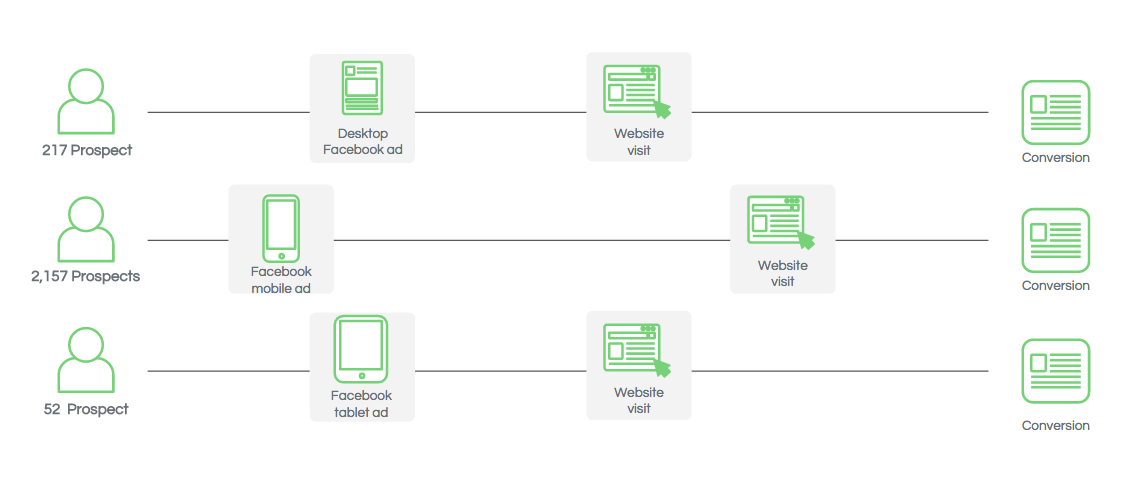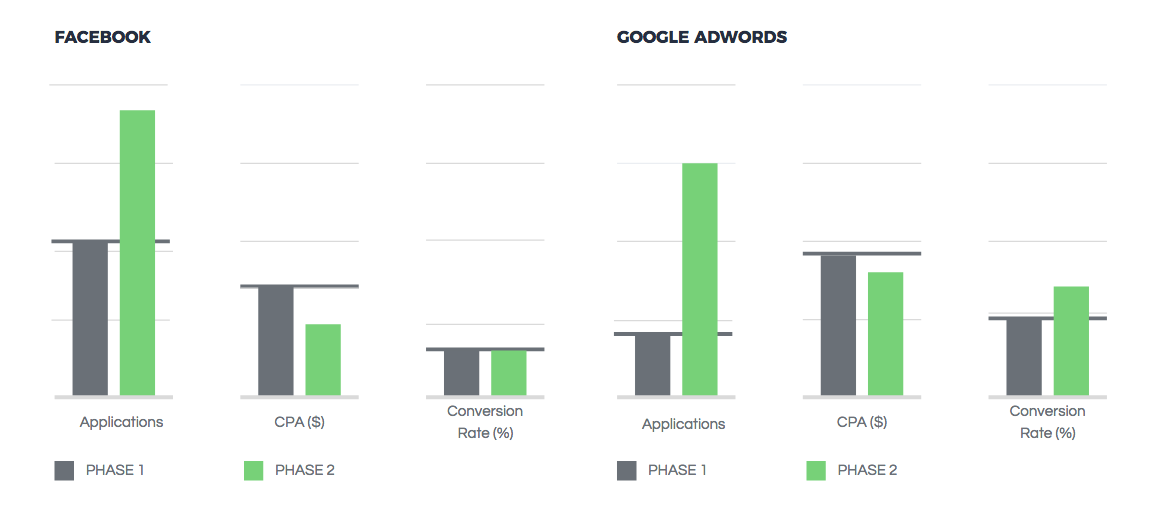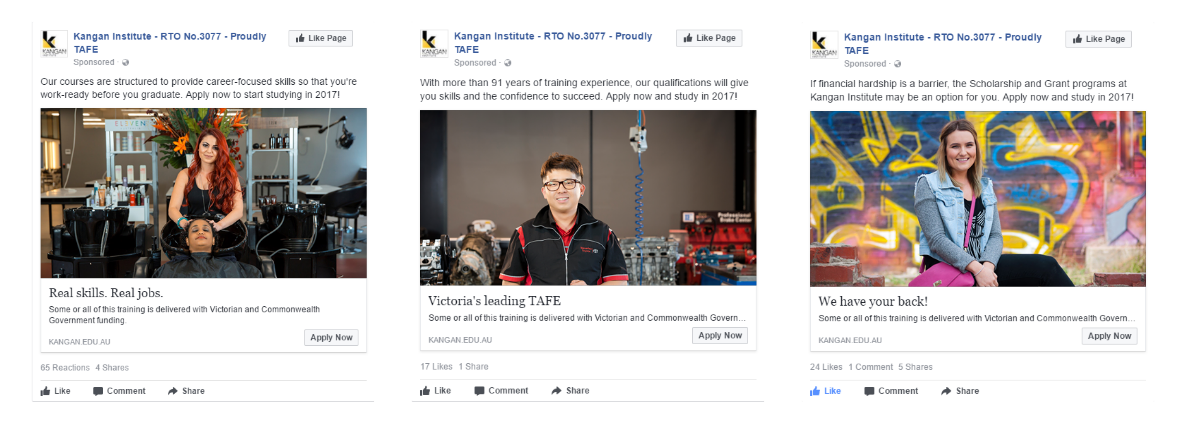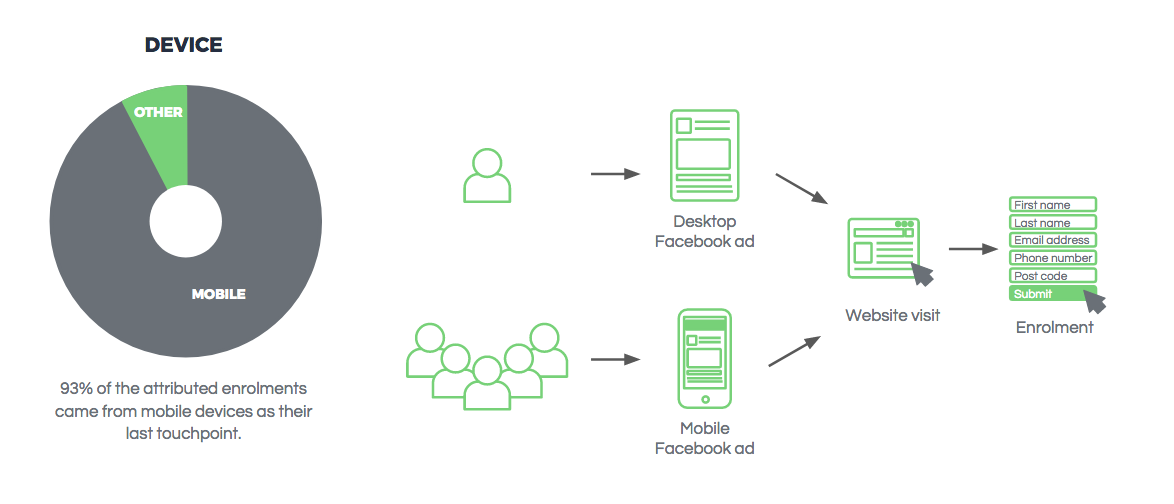BLOG
Case Study: Digital Marketing for Enrolments
Kangan Institute partnered with Social Garden to broaden their online presence, assist in digital reporting and analytics, and ultimately, drive online applications in Semester 1 2017. Our client came to us with a key goal:
To increase visibility across the sources behind their lead application volume.
These are the 5 phases of the online marketing strategy we created for them.
1 – Challenge: Mapping the Customer Journey
Many businesses understand the importance of capturing data in order to know more about the person behind the prospect. But it’s how this data is used to map out their customer journey, and facilitate them further down the sales funnel, that is most important.

2 – Creating our Online Marketing Strategy
With a large enrolment target, we began by devising a digital marketing strategy to target prospective students across a number of channels. The aim was to optimise toward the ad sets that would drive applications.
We started by identifying our primary target audience. These were prospective domestic students, with both a school leaver and mature student or non-school leaver segment. To determine these audiences, we worked with portfolio consultants to create different personas matched to each course area.
Careful audience segmentation is an effective starting point for a highly-personalised campaign, and this can be reflected in both the messaging and targeting parameters. Our audiences were carefully selected based on behavioural information collected through algorithmic learnings and client workshops.
3 – Choosing the right Social Media and Google Channels
If your goal is to reach prospective students at every stage of awareness, a great way to achieve this is to implement a selection of social channels. Facebook advertising was selected to target users across all devices on Facebook, Instagram and Audience Networks.
A highly segmented strategy was also developed for Google AdWords, with a breakdown below:
Google AdWords Search
Search ads allow you to reach prospects on all devices used to search for information regarding your product, across Google and Google Search Partners. Broad and brand targeted keywords generated higher search traffic and conversions for our client. Insights such as this, coupled with data to suggest desktop as the optimal advice, allowed us to continually optimise.
Google AdWords Display
Utilising the Google Display Network and YouTube allowed us to retarget visitors to our client’s website. Based on user behaviour, we could then retarget those who visited the site but did not convert over a period of time. This allows you to measure which audience groups are more likely to convert.
Google AdWords DSA
Dynamic Search Ads show based on the context of the website. Instead of keywords, we chose to use content from the Kangan Institute website to target our ads to searches. Because they have a well-developed, content-rich website, in this instance the strategy saw strong results. DSA is a great option to fill in the gaps from keywords-based campaigns.
4 – Tailored Account Management through all Phases
I worked with our Director of Advertising, Brendon, to provide weekly updates. This tailored account management service also included weekly meetings with the project lead, ensuring ongoing effective lead distribution and volume.
Phase 1
Our objective was to drive brand awareness and create hype for the intake. This generated early applications and helped us to build audience lists for the purpose of retargeting in Phase 2.
Phase 2
During the second phase, we drove online applications and leads for courses flagged with low enrolment figures via Facebook.
Optimising the Marketing Campaign
Brendon continually optimised the campaign to build on insights and shape the weekly results. Cyclical evaluation is an important element in any large-scale campaign. We also built and implemented our own custom and lookalike audiences. This led to achieving greater visibility on where the opportunities for real improvement lay.

Each week, we provided the team at Kangan Institute with a campaign snapshot. On top of this, monthly reports showed the top performing creative, targeting and devices.
We split this for each course area to include key recommendations. When it comes to testing, consistent reporting is invaluable. It makes us take a step back and analyse the data without getting lost in it.
We ran multiple experiments across our Facebook advertising. We tested imagery themed around students in non-discernable, practical learning or classroom settings. The latter generated the best results, evident down to the course-specific ad sets.

5 – Analysing Great Results
Social Garden exceeded the enrolment target by 7.55%.
- Our Facebook campaign attributed to 31% of the enrolments between December 2016 to March 2017. A significant number of students engaged with a Facebook ad prior to enrolling.
- More than 92% of students viewed an ad without clicking on it before completing their enrolment. Over 8% last clicked on our ad before completing their enrolment. It’s results like this that show the real value in segmenting your data and optimising continuously.
By using data smarter, we could break down their lead volume by channel and cost per lead by source, so that we can now advise our client on future lead generation campaigns to achieve greater success.












